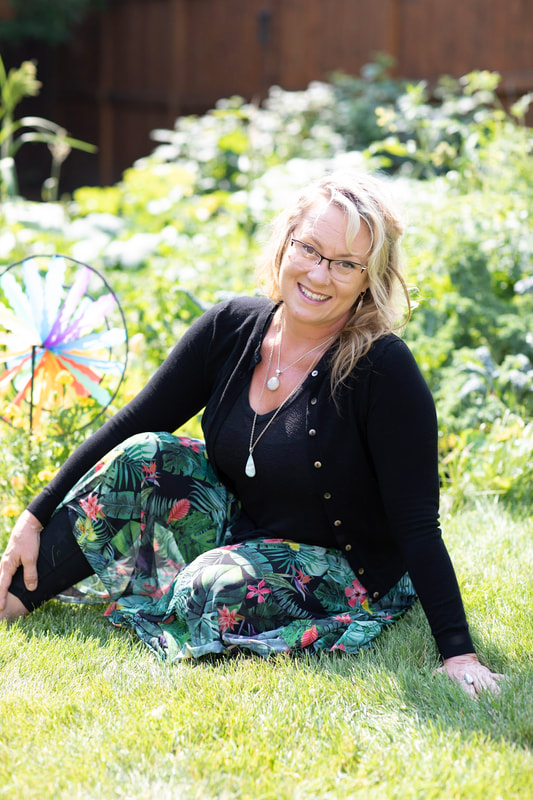|
How to Rewire Your Attachment Style Ten Effective ways to Support Growth and Change When discussing ways to reparent ourselves to move into Secure Attachment, what is important is to be able to acknowledge when you are feeling triggered and have compassion for where this trigger was first formed. Knowing yourself, building self-esteem, and finding self-compassion are steps in the right direction to achieving a Secure Attachment style but it is a process. Have compassion for your journey of rewiring and learning, just as you would a small child. Here are some key steps in moving toward the direction of having a secure attachment pattern in your life. 1. What do you love doing? Do it more! Living passionately involves having things in our life that we love doing. What are things that you are already good at and give you a sense of pride, joy and passion? Do more of these, making time each week to dive deeper into your own pursuits that give you a sense of being in the flow. Keep developing these things you are already good at and the things you love, and notice the sense of accomplishment you get from these. If you are unsure of what you are good at or what brings you this sense of joy where time melts away and you can be completely immersed, write out a list of the things you love doing and spend time each week or even each day if you have the time. Know that you are giving yourself a gift by taking the time to dive into your passions in a concentrated way. It can take patience to stumble upon the things you love. We don't always know our passions until we find ourselves doing them and realize we're totally in our element. 2. Push yourself out of your comfort zone Write out a list of areas in your life that may bring a sense of discomfort, nothing dangerous but things in life you may avoid. Looking at your list, pick one or two and consciously decide to push yourself in a way that feel safe but engages you in these areas. Building self-esteem takes courage and patience. You'll feel proud of your courage when you push yourself and see that you are stronger and braver than you may have known. 3. Strengthen your body physically Looking after yourself physically by attending to your wellness and self-care nurtures emotional strength and stability more than you might realize. You can start out small but be sure to do something physically strengthening every day. 4. Create a deeper sense of Self Compassion Become aware of the way you talk to yourself. Often times, our self-talk, or ways we speak to ourselves in our head, can be harsh and critical. It's essential to become aware of this and to start infusing some new ideas. If you're hard on yourself, ask yourself whether you'd speak to someone else that way. Would it help a child's self-esteem and emotional growth if you spoke to them the way you speak to yourself? If not, think about giving yourself the same level of kindness and compassion you'd give another because feeling ashamed and criticized, for whatever reason, is not helpful. 5. Insight, understanding, and awareness generate acceptance and fuel your journey into emotional freedom Insight means realizing why things worked out as they did, why you are how you are, why they were how they were. It's not about making excuses for anyone. It's about assessing the depths and locations of the scars in your inner landscape so you don't keep falling into those same patterns for the rest of your life. When you find yourself pushing someone away, ask why. If you feel worried that your partner is going to leave you, again, ask yourself where this is coming from. Have they shown you any reason to believe this? Many times, there is no real evidence. In that case, allow yourself to calm down and try not to obsess over it. 6. Focus On Healing Childhood situations and experiences that promote insecure attachments also tend to create shame and self-esteem issues. Living with shame can result in self-neglect (focusing on everyone else's needs while ignoring your own), self-criticism, self-sabotage, and even self-destructive behaviors. Beginning to heal from these symptoms will help you lay the foundation to form secure attachments. These feelings and behaviors are often connected to a deeply rooted, self-imposed belief that an individual does not deserve happiness or healthy relationships. While healthy guilt can help an individual make better choices, the shame and self-loathing that often accompany an insecure attachment style can make a person feel perpetually stuck in insecurity. 7. Build Self-Esteem Self-forgiveness provides a fresh start. Once you're no longer bogged down by the pain of the past, you can work on building yourself up. You might have years of experience with negative self-talk, shame, and criticism, so it's time to turn things around. 8. Communicate your needs In loving relationships, partners have a desire to make one another happy. Allow yourself to express what your needs are to your partner, knowing that this will not push them away but help them to know you better. Be clear that your needs are yours; try not to focus on what your partner is NOT doing but rather what you would like them to do differently in the relationship to help you feel more supported, connected and loved. Communication is key. 9. Learn how to handle conflict effectively The conclusion of a fight is NOT usually the end of the relationship. It may feel vulnerable to open up but having clear communication in what is bothering us may help to bring people closer together. If you can speak openly about your fears, you will give them less power over you. Do Not Avoid Conflict or assume you are inconveniencing or burdening another by bringing up your concerns. If your partner has been caring and responsive to your needs in the past, trust this pattern and allow dialogue between you two about what is on your mind. Don’t assume your partner knows what is on your mind and don’t assume you know what is on their mind- always ask. Like those with an anxious attachment style, avoidants can also have great difficulty at facing conflict- for a very different reason though! Conflict, when done right, increases closeness and intimacy. This is usually what the avoidantly attached person is trying to avoid, knowingly or unknowingly. It’s important to recognize WHY you distancing yourself during a conflict (i.e. shutting down, giving up etc.). Fighting the instinct to avoid conflict is difficult. 10. Shift Away from Self-Reliance Towards Mutual Support Often times, people become so used to depending entirely on one's self, that the idea of letting that go is very distressing. Or the feeling that no one has ever been there or that people have left us in the past can become the lens we look through all the time; with the expectation that relying on another will only bring up those painful experiences again. Our past does not need to be our future. This also makes it difficult to allow anyone to truly depend on YOU to meet their needs- you may be afraid that you will also be expected to let your walls down and reciprocate this level of trust, and that may not come naturally to you. Having your identity and independence outside of a romantic relationship is very important. However, perceiving a relationship as a threat to your self-reliance can greatly get in the way of your ability to be in a fulfilling relationship. Mutual support is important between partners. Try and see it this way: if you allow someone to depend on you and meet their needs reliably, they will ultimately be less ‘needy’. You will also feel better about sharing your load in life with them because there is no longer pressure to reciprocate. If you are in crisis or need someone to talk to immediately, please go to the worldwide crisis line: www.befrienders.org Or if you are in Canada visit: www.crisisservicescanada.ca or call : 1-833-456-4566 or text 45645. Private individual art therapy and counselling sessions are also available by contacting me at [email protected]
0 Comments
Leave a Reply. |
AuthorCharmaine Husum runs a private Art Therapy practice online and in Calgary Alberta. She is also an Artist, Kundalini Yoga teacher and trained in the somatic approach of Integrative Body Psychotherapy, Reiki and Mystical Integration. Her current research enthusiasms are in neuroplasticity, neuroscience, epigenetics, mystical integration and intergenerational trauma; on which she is currently writing a book and creating online courses. She specializes in working with trauma and symptoms of PTSD and C-PTSD as well as Autism, Depression, Anxiety, Eating Disorders, Addiction and other mental health symptoms. Archives
July 2023
Categories
All
|
"Sometimes the smallest step in the right direction
ends up being the biggest step of your life.
Tip toe if you must but take the step".
- Naeem Callaway
© 2022-24 Centre of the HeArt
Website Design By: IA Creative
Website Design By: IA Creative


 RSS Feed
RSS Feed



